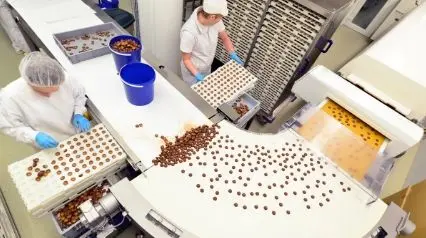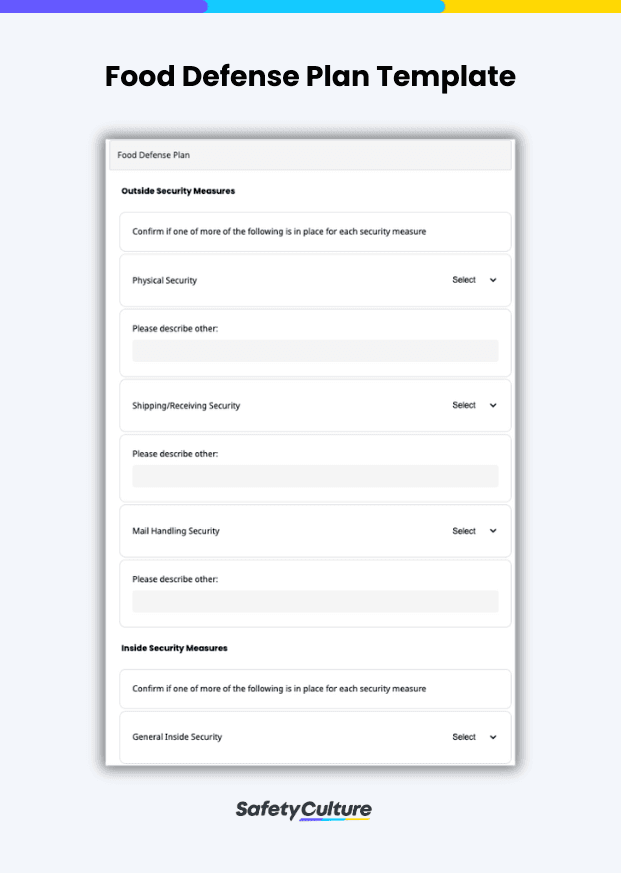What is Food Defense Plan?
A food defense plan is a tool that aims to help quality managers in the food business to meet the requirements of the Mitigation Strategies to Prevent Food Against Intentional Adulteration regulation (21 CFR Part 121) by the FDA. It outlines the process of protecting food products from intentional adulteration or contamination that can harm consumers, business establishments, or the general public. Use of a food defense plan isn’t required by law, but it is best practice to use the plan to supplement education, training, and experience for food safety. Doing so will be beneficial in avoiding food safety incidents, costly recalls, and disruptions in food production.
How do I Create a Food Defense Plan?
A food defense plan can be created by adapting the USDA’s Food Safety and Inspection Service (FSIS) four conditions on food defense plans and creating it according to the unique needs of your business. Follow these four steps to create your own food defense plan:
Step#1: Planning
Form a team that will create a food defense plan based on assessments of vulnerable critical control points in food production and handling (related: TACCP). There are also tools available (FDA’s food defense plan builder) that can help build a customized food defense plan.
Step#2: Implementation
It is critical to engage the employees and get their buy-in when implementing a food defense plan. Conduct employee training and meet with stakeholders to implement processes that proactively promote the safety of food products.
Step#3: Internal monitoring and analyzation
Perform internal audits to catch gaps or non-conformance with the implementation of a food defense plan. Analyze food safety inspections to determine the most common non-conforming items and discover areas for improvement in food defense.
Step#4: Continuous improvement
FSIS recommends reviewing the food defense plan at least once a year. Others recommend every three years or sooner if there are changes in operations. Based on audit reports, industry best practices, the latest regulations and standards on food safety (e.g., IFS Food), and new hazards, determine if the food defense plan needs to be updated or improve how it is implemented to keep up with new and changing threats to food defense.
Food Defense Plan Example
To help you get started with a proactive approach to food defense, presented below is a snapshot of a sample food defense plan:
Area |
Vulnerability |
Food Defense Solution |
| Outside Security | Potential tampering of incoming shipments | Careful examination of incoming raw materials (e.g. incoming inspection) |
| Inside Security | Suspicious packages and unexpected inventory changes | Establish SOP for reporting to appropriate personnel |
| Personnel Security | Lack of awareness to security measures | Periodic food defense training |
| Incident Response Security | Product spoilage due to equipment failure | Upgrade food defense system with preventive alerts (e.g. temperature and humidity sensors by SafetyCulture) |
FAQs About Food Defense Plan
A functional food defense plan should be reviewed at least once a year or annually. According to the United States Department of Agriculture (USDA), organizations should leverage these annual reviews to modify their food defense plan and create strategies to improve food security.
The four key activities that are vulnerable to intentional adulteration are bulk liquid receiving and loading, liquid storage and handling, secondary ingredient handling, and mixing and similar activities. According to the FDA, these food manufacturing processes should also be included in a vulnerability assessment.
The three most prominent motivations that threaten food defense are terrorism, sabotage, and economically motivated adulteration or EMA. By being familiar with these motivations, food businesses can prevent and address intentional adulterations through a comprehensive food defense plan.


